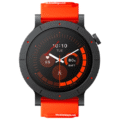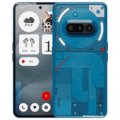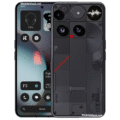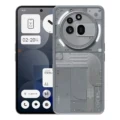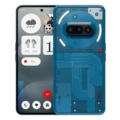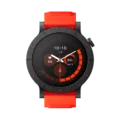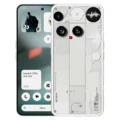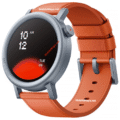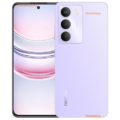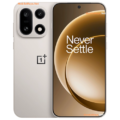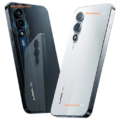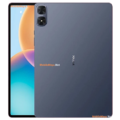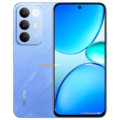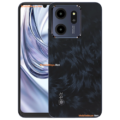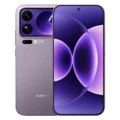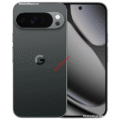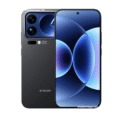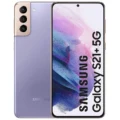Price List: Under Tk.5,000 | Tk.5001-10000 | Tk.10001-15000 | Tk.15001-20000 | Tk.20001-30000 | Tk.30001-40000 | More Mobiles
- Home
- All Mobile
- Nothing
- Nothing Phone (3)
Nothing Phone (3)
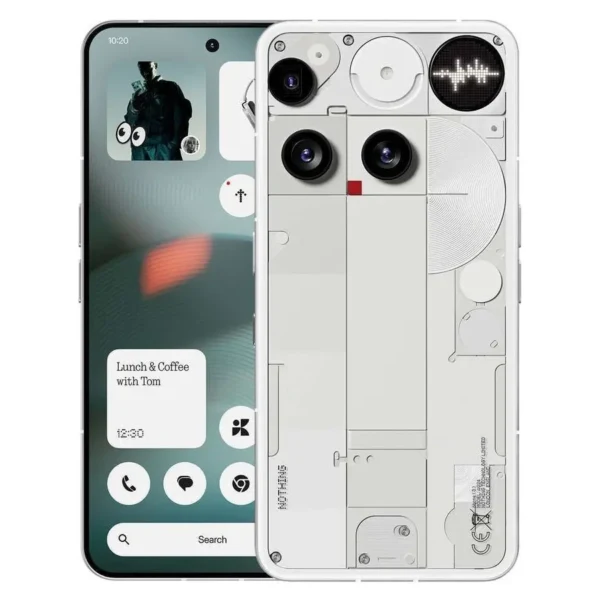

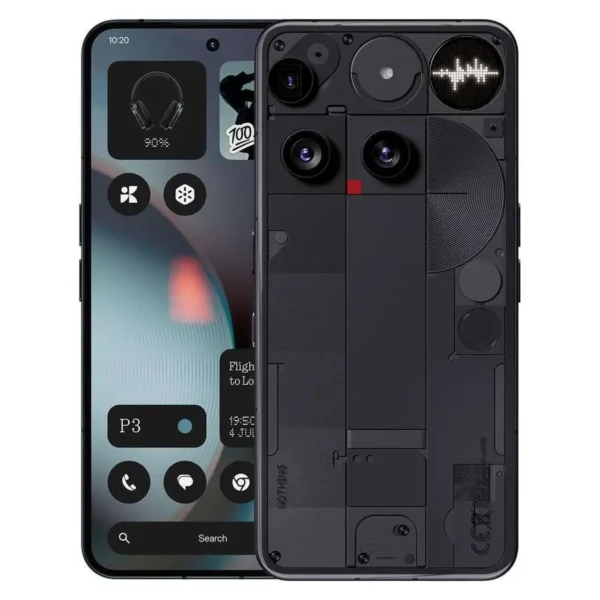
Specifications
Price in Bangladesh
| Unofficial Unofficial prices and phones are available only non authorized shops. The device does not come with an official warranty in Bangladesh. | 8GB 128GB ৳67,000 / 12GB 256GB ৳70,000 |
General
| Device Type | Smartphone |
| Model | A024 |
| Announced | July, 2025 |
| Released | July, 2025 |
| Status | Available |
Hardware & Software
| Operating System OS => Every computer system run on a base software called Operating System (OS). Operating System controls all basic operations of the computer (such as smartphone, PDAs, tablet computers and other handheld devices). The Operating System allows the user to install and run third party applications (apps), apps are used to add new functionality to the device. | Android |
| OS Version | v15 |
| User Interface UI or user interface of a device is the look and feel of the on-screen menu system. How it works, its color scheme, how it responds to button presses, all of these things are part of the user interface. | Nothing OS 3.5 |
| Chipset Chipset is a group of integrated circuits designed to perform one or a more dedicated functions, often with real time computing constraints, Popular smartphones are equipped with more advanced embedded chipsets that can do many different tasks depending on their programming. | Qualcomm SM8735 Snapdragon 8s Gen 4 |
| CPU CPU (Central Processing Unit) mostly known as processors, CPU processes instructions in order to carry out certain functions that make your device operate properly. Processors are often described as the brain of computers, smartphones and tablets, Smartphones and tablets rely on processors to carry out their every task, Processors are an incredibly important factor in selecting any type of computing device, including your smartphone. | Octa-core (1x3.21 GHz Cortex-X4 & 3x3.0 GHz Cortex-A720 & 2x2.8 GHz Cortex-A720 & 2x2.0 GHz Cortex-A720) |
| CPU Cores | 8 Cores |
| Architecture | 64 bit |
| Fabrication | 4 nm |
| GPU GPU (Graphics Processing Unit) is a single-chip processor designed to rapidly manipulate and alter memory to accelerate the creation of images in a frame buffer intended for output to a display, This includes things such as lighting effects, object transformations, and 3D motion. | Adreno 825 |
| RAM (Memory) RAM (Random Access Memory) is a type of computer memory that can be accessed randomly, any byte of memory can be accessed without touching the preceding bytes that allows information to be stored and accessed quickly from random locations. RAM is the most common type of memory found in computer systems, smartphones, tablets and other electronic devices. | 12 GB, 16 GB |
Design
| Dimensions | 160.6 x 75.6 x 9 mm (6.32 x 2.98 x 0.35 in) |
| Weight | 218 g (7.69 oz) |
| Colors |
White, Black |
| Build Material | Glass front (Gorilla Glass 7i), glass back (Gorilla Glass Victus), aluminum frame |
| Water Resistant | Water resistant (up to 1.5m for 30 min) |
| IP Rating | IP68 |
| Ruggedness | Dust proof |
Display
| Display Type Display Technology => A number of display technologies and types used in mobile phones => TFT (Thin Film Transistor), IPS (In-Place Switching), OLED (Organic Light Emitting Diode), AMOLED (Active-Matrix Organic Light-Emitting Diode), Super AMOLED (an even advanced version of AMOLED), Resistive Touchscreen (Resistive touchscreens contain two layer of conductive material with a very small gap between them which acts as a resistance), Capacitive Touchsceen (Capacitive touchscreen technology consists of a layer of glass coated with a transparent conductor) | OLED |
| Size | 6.67 inches (16.94 cm) |
| Resolution | 1260x2800 px (FHD+) |
| Aspect Ratio | 20:9 |
| Pixel Density Pixel Density (PPI) is refers to the concentration of pixels on a particular display, measured in pixels per inch (ppi). Pixel density is calculated by dividing the diagonal pixel resolution of a display by its diagonal size, higher pixel density better display quality. | 460 ppi |
| Screen to Body Ratio | 88.5% |
| Touch Screen | Capacitive Touchscreen, Multi-touch |
| Brightness | 4500 nits |
| Refresh Rate | 120 Hz |
| HDR 10 / HDR+ support |
Rear Camera
| Camera Setup | Triple |
| Main Camera | 50 MP, f/1.7, 24mm (wide), 1/1.3", PDAF, OIS |
| Second Camera | 50 MP, f/2.7, (periscope telephoto), 1/2.75", PDAF, 3x optical zoom. OIS |
| Third Camera | 50 MP, f/2.2, 114˚ (ultrawide), 1/2.76" |
| Autofocus | Yes |
| OIS | |
| Flash Flash Light => There is commonly two types of flash lights are used in camera mobile phones, LED Flash (LED flash offers lower power consumption with drive circuitry that takes up very little room, LEDs can be strobed faster than any other light source), Xenon Flash (xenon flash produces an extremely intense full-spectrum white light for a very short duration) | LED Flash |
| Image | 8150 x 6150 Pixels |
| Settings | Exposure compensation, ISO control |
| Zoom | Digital Zoom |
| Shooting Modes | Continuous Shooting, High Dynamic Range mode (HDR), Macro Mode |
| Aperture | f/1.7 |
| Camera Features |
Auto Flash, Face detection, Touch to focus, Slow Motion |
| Video | 4K@30fps, 1080p@30/60fps, gyro-EIS, live HDR |
| Video Recording Features | 3840x2160,1920x1080 |
| Video FPS | 60 fps, 240 fps |
Front Camera
| Camera Setup | Single |
| Secondary |
50 MP, f/2.2, 81˚ (wide), 1/2.76" |
| Aperture | f/2.2 |
| Video | 1080p@30fps |
| Video FPS | 30 fps |
Battery
| Battery Type Battery Type => Cell phones run on various kinds of batteries depending on the manufacturer, phone size or shape and features. There are basically four types of cell phone batteries => Lithium Polymer, Lithium Ion, Nickel Metal Hydride and Nickel Cadmium. | Li-Ion (Lithium Ion) |
| Placement | Non-removable |
| Capacity Battery Capacity is a measure (typically in Amp-hr) of the charge stored by the battery, and is determined by the mass of active material contained in the battery. The battery capacity represents the maximum amount of energy that can be extracted from the battery under certain conditions. | 5500 mAh |
| Quick Charging | 65W wired, PD3.0, PPS, QC4 |
| Wireless Charging Wireless Charging (Inductive Charging) uses an electromagnetic field to transfer energy between two objects. This is usually done with a charging station. Energy is sent through an inductive coupling to an electrical device, which can then use that energy to charge batteries or run the device. |
15W wireless |
| USB Type-C | USB Type-C 2.0 |
Storage
| Storage Type | UFS 4.0 |
| Storage Capacity | 256 GB, 512 GB |
| USB OTG |
Network
| 2G Network | GSM 850 / 900 / 1800 / 1900 |
| 3G Network |
HSDPA 800 / 850 / 900 / 1700(AWS) / 1900 / 2100 |
| 4G Network | 1, 2, 3, 4, 6, 7, 8, 12, 17, 18, 19, 20, 25, 26, 28, 30, 34, 38, 39, 40, 41, 42, 48, 66, 71 LTE |
| 5G Network |
1, 2, 3, 5, 7, 8, 12, 20, 25, 28, 30, 38, 40, 41, 48, 66, 71, 77, 78 SA/NSA |
| SIM SIM (Subscriber Identity Module) is a small card that contains mobile network subscriber's account information. This allows the phone using the card to attach to a mobile network. The SIM card is most commonly associated with GSM and UMTS mobile networks. Moving a SIM card from one phone to another allows a subscriber to switch mobile phones without having to contact their mobile network carrier. SIM cards can also be used by a phone to store limited amounts of data, such as phone numbers and text messages. | Standard SIM |
Data
| GPRS GPRS (General Packet Radio Service) is a packet oriented mobile data service on the 2G and 3G cellular communication system's global system for mobile communications (GSM), Generally, GPRS is used for the purpose of wireless data transfer, such as sharing pictures and videos or browsing the Internet via a mobile phone connection. | |
| EDGE EDGE (Enhanced Data GSM Environment) is a wireless network technology generally considered the next step in the 2G network offers data transfer rates up to four times faster than ordinary GSM networks, Generally, EDGE is used for the purpose of wireless data transfer, such as sharing pictures and videos or browsing the Internet via a mobile phone connection. | |
| Speed | HSPA, LTE, 5G |
| Web Browser Web Browser => a web browser is a software application used to locate, retrieve and display content on the World Wide Web, including Web pages, images, video and other files, The primary function of a web browser is to render HTML, the code used to design or markup webpages. | HTML5 |
Messaging
| SMS SMS (Short Messaging Service) is a text messaging service component of phone, Web, or mobile communication systems. It uses standardized communications protocols to allow mobile phone devices to exchange short text messages over the networks. | Yes |
| MMS MMS (Multimedia Messaging Service) is a standard way to send messages that include multimedia content (audio clips, video clips and images) to and from mobile phones over wireless networks using the WAP protocol. | |
| Email Email (Electronic Mail) is a system for receiving, sending, and storing electronic messages, Similar to a letter, email is text messages that may contain files, images, or other attachments sent via the internet to a recipient by using applications and software prograps. An email address is required to receive email, and that address is unique to the user. | Yes |
| IM IM (Instant Messaging) is an exchange of text messages through a software application, it enable you to create a kind of private chat room with another individual in order to communicate in real time over the Internet. | Yes |
Connectivity
| Bluetooth Bluetooth is a wireless communications technology for exchanging data between mobile phones, headsets, computers and other network devices over short distances without wires, Bluetooth technology was primarily designed to support simple wireless networking of personal consumer devices. | 6.0, A2DP, LE |
| Wi-fi Wi-Fi is a popular wireless networking technology using radio waves to provide high-speed network connections that allows devices to communicate without cords or cables, Wi-Fi is increasingly becoming the preferred mode of internet connectivity all over the world. | Wi-Fi 802.11 a/b/g/n/ac/6/7, tri-band, Wi-Fi Direct |
| Wi-fi Hotspot | |
| Infrared Infrared connectivity is an old wireless technology used to connect two electronic devices. It uses a beam of infrared light to transmit information and so requires direct line of sight and operates only at close range. | |
| USB | USB Type-C 2.0, OTG |
| GPS GPS The Global Positioning System is a satellite-based radio navigation system, GPS permits users to determine their position, velocity and the time 24 hours a day, in all weather, anywhere in the world, In order to locate your position, your device or GPS receiver must have a clear view of the sky. | GPS (L1+L5), GLONASS, BDS, GALILEO, QZSS, NavIC, SBAS |
| NFC NFC (Near field communication) is a set of standards for smartphones and similar devices to establish peer-to-peer radio communications with each other by touching them together or bringing them into proximity, usually no more than a few inches. |
Media
| FM Radio | No |
| Loudspeaker | Yes, with stereo speakers |
| 3.5mm Jack | No |
| Audio Jack | USB Type-C |
Sensors & Security
| Fingerprint Sensor | |
| Fingerprint Sensor Position | On-screen |
| Light Sensor | Light sensor, Proximity sensor, Accelerometer, Compass, Gyroscope |
| Face Unlock | Yes |
More
| Made By | UK |
Performance Tests
| AnTuTu | 1948966 (v10) |
| GeekBench | 6900 (v6) |
| Display | 1507 nits max brightness (measured) |
| Loudspeaker | 1507 nits max brightness (measured) |
| Battery (new) | Active use score 12:56h |
PROS
- Stylish transparent design
- Flagship-level performance
- Brilliant OLED display with HDR10+
- Excellent camera setup with OIS
- Strong battery life and fast charging
- IP68 dust/water resistance
- Clean and minimal software
CONS
- No official release in Bangladesh yet
- No 3.5mm headphone jack
- No expandable storage option
- Slightly heavy (218g)
Nothing Phone (3) Price in Bangladesh
The Nothing Phone (3) is priced in Bangladesh starting at ৳67,000 for the base variant. This latest release from Nothing continues the brand’s tradition of sleek, transparent design and powerful hardware packed into a futuristic build. Equipped with the Snapdragon 8s Gen 4 chipset, a 6.67-inch OLED 120Hz display, and a triple 50MP camera system, it offers an impressive flagship-level experience at a relatively competitive price point.
The phone runs on Android 15 with Nothing OS 3.5, providing a clean, near-stock interface that enhances usability and performance. With its IP68 rating, Gorilla Glass protection, and fast 65W wired charging, the Nothing Phone (3) stands out as a premium flagship contender in 2025.
Price & Variants
| RAM & Storage | Price (BDT) | Status |
|---|---|---|
| 8GB + 128GB | ৳67,000 | Unofficial |
| 12GB + 256GB | ৳70,000 | Unofficial |
Nothing Phone (3) Specifications
The Nothing Phone (3) delivers a modern design, advanced performance, and robust camera setup. Below is a detailed breakdown of its technical specifications.
| Feature | Details |
|---|---|
| Model Name | Nothing Phone (3) |
| Release Date | July 15, 2025 |
| Market Availability | Available (Unofficial) |
| Official Price | ৳67,000 (Unofficial) |
| RAM & Storage | 8GB/128GB, 12GB/256GB |
Display and Design
The Nothing Phone (3) boasts a 6.67-inch OLED display with a 1260×2800 pixel resolution and an impressive 120Hz refresh rate, delivering stunning clarity and ultra-smooth scrolling. It supports HDR10+ and reaches up to 4500 nits peak brightness, ensuring visibility even in bright outdoor environments.
Design-wise, it carries forward Nothing’s iconic transparent aesthetic, featuring a glass front (Gorilla Glass 7i), glass back (Gorilla Glass Victus), and a solid aluminum frame. Measuring 160.6 x 75.6 x 9 mm and weighing 218g, it feels both premium and durable. The phone also has an IP68 rating, making it resistant to dust and water (up to 1.5 meters for 30 minutes).
Performance and Processor
Under the hood, the Nothing Phone (3) runs on the Qualcomm Snapdragon 8s Gen 4 (4nm) chipset, paired with the Adreno 825 GPU. The octa-core CPU setup — including a 3.21GHz Cortex-X4 performance core — ensures exceptional multitasking, gaming, and productivity capabilities.
It comes in 12GB and 16GB RAM variants with UFS 4.0 storage (256GB or 512GB), providing lightning-fast app loading and file transfer speeds. While there’s no microSD slot, the ample built-in storage and optimized software make it ideal for power users and gamers alike.
On performance tests, it scores an AnTuTu v10 benchmark of 1,948,966 and GeekBench 6 score of 6900, confirming its strong flagship-grade performance.
Camera and Video
The Nothing Phone (3) houses a triple 50MP rear camera setup designed for pro-level photography.
- Main: 50MP (f/1.7, wide, OIS, PDAF)
- Telephoto: 50MP (f/2.7, 3x optical zoom, OIS)
- Ultrawide: 50MP (f/2.2, 114° field of view)
It supports advanced shooting modes like HDR, Macro Mode, and Slow Motion, with features such as face detection, auto flash, and touch to focus.
For videos, it records up to 4K at 30fps and 1080p at 60fps, with gyro-EIS stabilization ensuring smooth footage.
The front camera is equally impressive — a 50MP sensor (f/2.2) capable of recording 1080p@30fps videos, making it great for selfies and video calls.
Battery and Charging
Powering the phone is a 5500mAh Li-Ion battery, optimized for long usage with efficient power management. It supports 65W fast wired charging (PD3.0, PPS, QC4) and 15W wireless charging, delivering flexibility and speed.
In real-world usage, it delivers an active use score of nearly 13 hours, ensuring all-day performance even for demanding users.
Connectivity and 5G Support
The Nothing Phone (3) offers full 5G connectivity across multiple global bands, along with support for 2G, 3G, and 4G LTE. It includes dual SIM capability, ensuring seamless communication.
Additional connectivity features include:
- Wi-Fi 7 (tri-band)
- Bluetooth 6.0
- NFC support
- GPS with NavIC, GLONASS, GALILEO, and QZSS
- USB Type-C 2.0 with OTG
Additional Features
The Nothing Phone (3) runs on Android 15 with Nothing OS 3.5, offering a minimal, ad-free experience. It includes an in-display fingerprint sensor, face unlock, and an array of smart sensors (gyroscope, proximity, compass, and accelerometer).
Other notable features include:
- Stereo speakers
- Dust and water resistance (IP68)
- No 3.5mm headphone jack (audio via USB-C)
- Made in the UK
Reason to Buy
- Sleek transparent design with premium materials
- Flagship-level Snapdragon 8s Gen 4 performance
- Triple 50MP camera system with OIS and 4K video
- Stunning OLED display with HDR10+ and 120Hz refresh rate
- Long-lasting 5500mAh battery with fast and wireless charging
- Latest Android 15 and Nothing OS 3.5 software
- Excellent build quality and IP68 protection
Verdict
The Nothing Phone (3) solidifies Nothing’s place in the flagship segment with its balanced combination of performance, design, and innovation. From its high-end Snapdragon chipset to the impressive triple 50MP cameras and unique transparent design, it appeals to users who value both aesthetics and power.
Ideal for tech enthusiasts, gamers, and photographers, the Nothing Phone (3) offers flagship-grade performance without the ultra-premium price tag — making it one of the best-value high-end phones of 2025.
FAQ
Q1: What is the price of the Nothing Phone (3) in Bangladesh?
A: The price starts from ৳67,000 for the 8GB + 128GB variant (unofficial).
Q2: Does the Nothing Phone (3) support 5G?
A: Yes, it supports multiple 5G bands with SA/NSA network compatibility.
Q3: What operating system does the Nothing Phone (3) run on?
A: It runs on Android 15 with Nothing OS 3.5.
Q4: Is the Nothing Phone (3) waterproof?
A: Yes, it has an IP68 rating, making it water and dust resistant.
Q5: Does it have wireless charging?
A: Yes, it supports 15W wireless charging and 65W wired fast charging.
Alternatives to Nothing Phone (3)
- OnePlus 13 – Snapdragon 8 Gen 4, AMOLED LTPO display
- Google Pixel 9 – AI-enhanced photography, clean Android experience
- Samsung Galaxy S24 – Premium build, high-end camera system
- Xiaomi 15 Pro – Flagship specs at a competitive price
- iQOO 13 Pro – Gaming-oriented with Snapdragon 8s Gen 4
User Reviews
Disclaimer Note
We do not guarantee that the information of this page is 100% accurate and up to date.

